Traveling through Iceland is really accessible and convenient – all you need is to follow Road no. 1, also known as the ring road, and there is plenty to see. However, if you look at the map, you probably notice how few roads go through the middle of Iceland. 40% of the territory is uninhabited Highlands – a remote region full of unique raw and untouched nature. Besides its beauty, Icelandic Highlands are also notorious for minimal infrastructure, suitable only for four-wheel vehicles.
4×4 vehicles are also a safer choice in the wintertime. Especially if you are planning to explore anything beyond the Ring Road. There are plenty of gravel roads in Iceland; Westfjords is one of the regions notorious for its gravel roads. While they are passable with 2WD vehicles, usually 4WD gives you a bit more security. But, of course, a lot depends on the driving style, and one can‘t be too careful.
Icelandic Highlands

If visiting the Highlands of Iceland is on your bucket list, make sure to do plenty of research and preparation. As I already mentioned, there is close to zero infrastructure up there. Gravel roads are minimally maintained, and you will likely have to cross rivers. Let‘s go over the main points of what you need to know.
Plan and Prepare
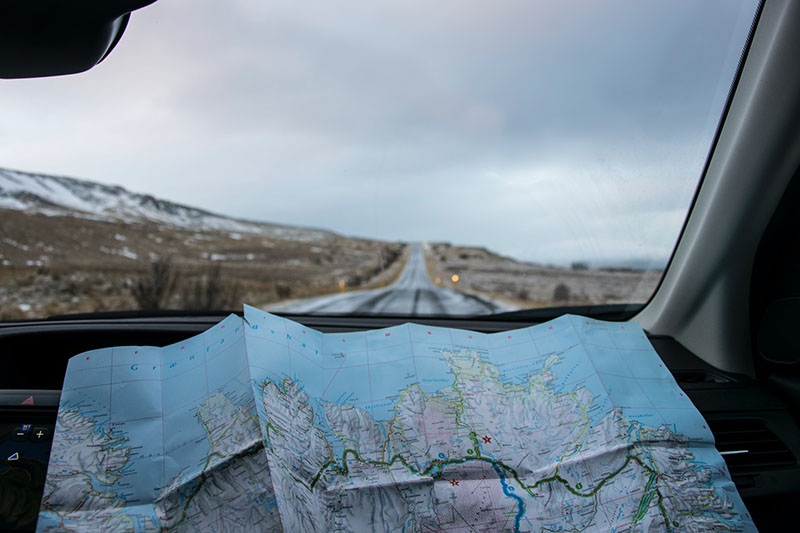
I already mentioned there are no gas stations, grocery stores, and many huts only offer minimal services. Therefore, make sure to have plenty of gas, water, and food with you if you get lost or stuck.
Keep in mind, Icelandic weather is unpredictable. Strong winds, snow, rain, and sandstorms are quite common in the Highlands. Make sure to pack plenty of layers and regularly check weather updates from the Icelandic Meteorological Office vedur.is. If the mobile connection is unavailable, talk with rangers at the huts and get the latest updates. Whether you are traveling in Highlands or around Iceland and weather warnings come up – you are better off postponing your trip and adjusting your travel plans.
Getting To The Highlands: F-Roads And General Safety
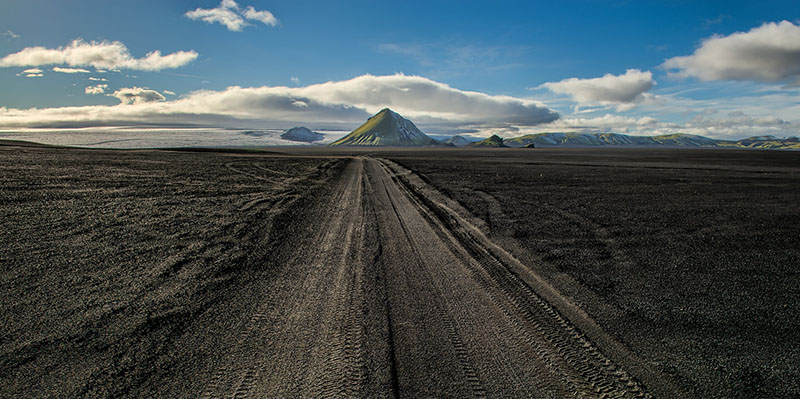
Not all gravel roads are F-roads, but all F-roads are gravel roads. F-Roads stands for mountain roads. Generally, numbers of these roads will start with the letter F. F-35, F208, and so on. Also, at the start of these roads, there are signs indicating only 4×4 vehicles are allowed from that point forward. So, even if the road ahead seems fine, you are forbidden to drive with 2WD cars there.
In general, Icelandic Highlands are accessible only for a couple of months every year. Roads open up min June and start closing in September. In wintertime, the F-roads leading to highlands are closed. There are a handful of tour companies that run winter tours with modified monster jeeps.
However, F-roads can be closed at any time with little to no warning. It could be because of a sudden flood or after heavy rain making roads impassable. Your best friend, in this case, is road.is. Keep an eye on updates, and be prepared to turn around and adjust your route at any time.
River Crossings
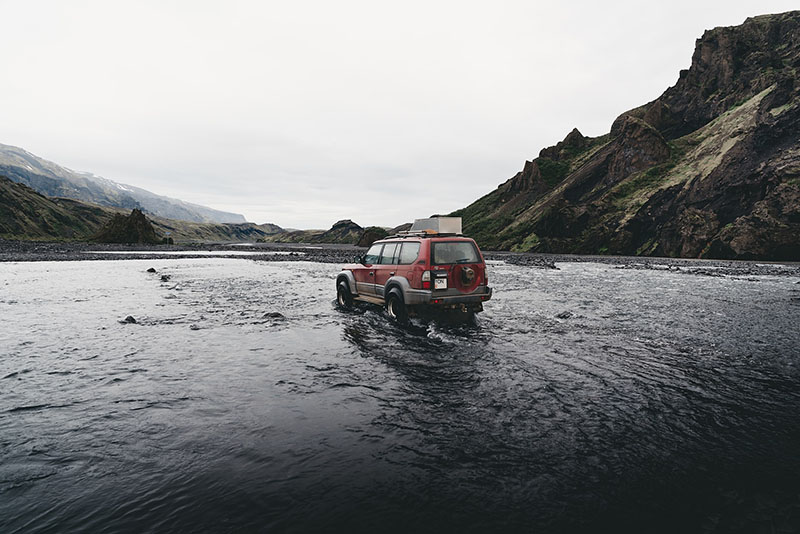
If you explore the Highlands, you will likely come across unbridged rivers. Some rental companies forbid river crossings altogether (check with your rental company). However, even if you are allowed to cross rivers, it is highly discouraged unless you know what you are doing.
First of all, no insurance in Iceland covers water damage. Therefore, if you decide to cross streams or rivers, the risk is 100% on you, and the injuries can be costly. Here are a couple of points on how to navigate through rivers:
- Find the most shallow part of the stream. Remember, if the water seems calm – it means the river is deep there. The river depth is everchanging, even throughout the day. A good rule of a thumb is if you can not walk through the river – you cannot drive through it either.
- Avoid doing it alone. If possible, wait for the other cars to come around. It will be easier to navigate, also, if one of you gets into trouble – they might be able to help you out.
- Take it slowly. Drive no faster than 5 km/h. Take it slow but never stop in the middle of stream.
- Drive downstream. It is easier on the car when you are driving with a stream than against it.
- If you unsure if you can make it – don‘t do it at all. The risk is too great, and it is not worth putting yourself in danger.
Dangerous Roads
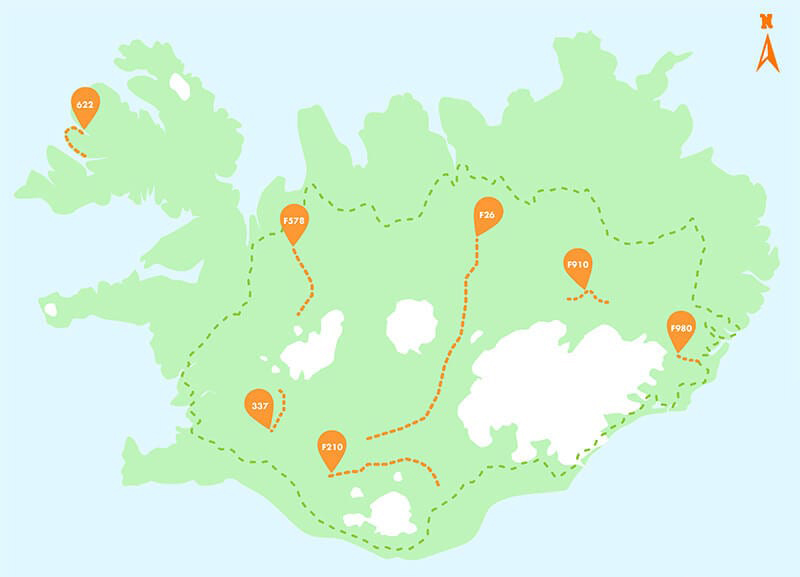
We strongly advise against using these seven roads:
- 622 (Westfjords) passage from Fossdalur to Thingeyri.
- F578 (Arnarvatnsvegur) is located north of Langjökull and features some extremely dangerous river-crossings.
- F337 (Hloduvallavegur) unmarked mountain road located north of Laugarvatn. One of the steepest drives in Iceland.
- F210 (Fjallbaksleid Sydri) lies between Landmannalaugar and Þórsmörk. It includes very difficult terrain and dangerous river crossings, so it is forbidden for all seasons.
- F26 (Sprengisandsleid) Parts of this route that can be very dangerous, two glacier rivers can be extremely dangerous.
- F910 (Austurleid) This route leads to Lake Askja, north of Vatnajökull glacier. It is a very difficult road with dangerous river crossings, so we highly advise against using it.
- F980 (Kollmuluvegur) can be very dangerous and is only suitable for 4x4s with very high ground clearance and experienced drivers.
4X4 Campers and Insurance
Not all 4×4 vehicles are created equally and have different limitations when it comes to driving on F-Roads. Of course, the most suitable option is big modified jeeps that can make even through winter conditions in Iceland. However, they are expensive and often require a special driver‘s license to be operated.
Cheap 4×4 Camper With Rooftop Tent
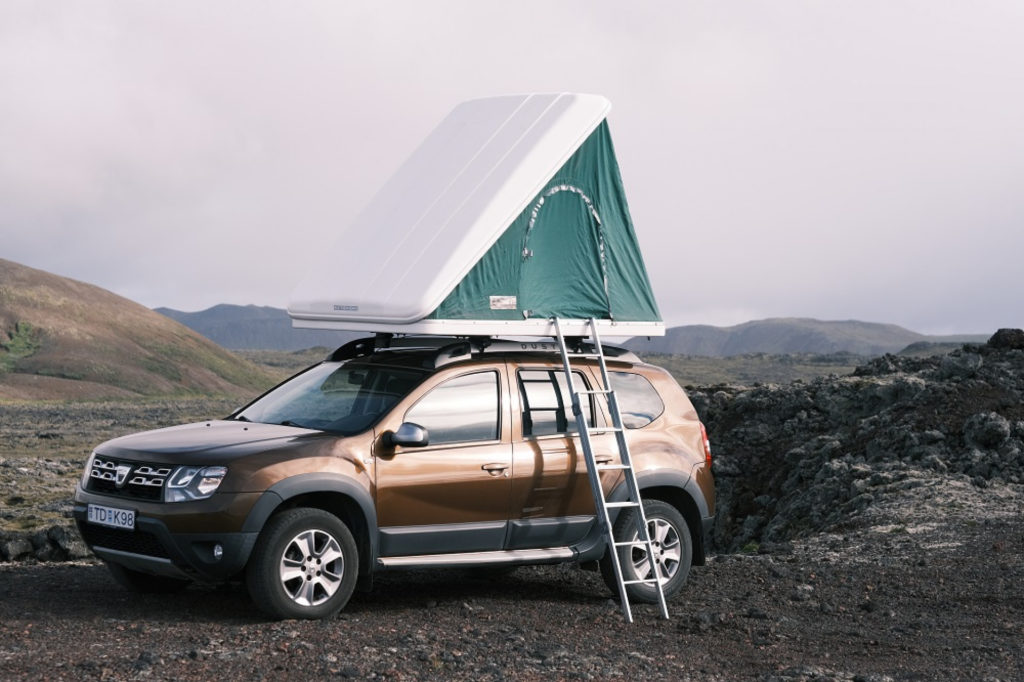
A cheap 4×4 Camper with a Rooftop tent is a simple solution for those who need essential features. Dacia Dusters are SUVs with raised ground clearances, are one of the most miniature vehicles allowed on F-Roads. As I mentioned, no insurance company in Iceland covers water damage. Therefore drivers have to be extra careful when it comes to river crossings.
Third-Party Liability and CDW
It is always important to understand your insurance policy when renting any car in Iceland. But it is extremely important if you are planning to go onto more remote roads like in Highlands because the risk of damaging a vehicle increases significantly. Most companies use the same terms and conditions provided by their insurance company.
By law, all car rental companies are required to offer basic third-party liability insurance. Most rentals use the same terms provided to them by their insurance company. Cheap Campervans insurance partner is VÍS, and detailed policy terms can be found here.
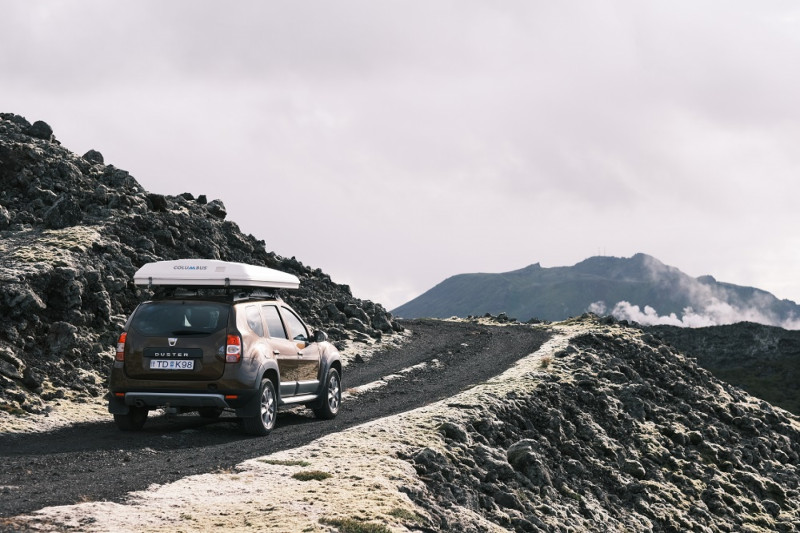
Additional Insurance
Another typical insurance that is included in all Cheap Campervans rentals is CDW or Collision Damage Waiver. With this insurance, your self-risk is reduced to 2500 EUR. So, if a driver would completely destroy the car, the maximum amount they have to pay would be 2500 EUR. You can reduce your self-risk even more with SCDW.
You are NOT covered, and your CDW is not valid in the following cases:
• Water damage – whether it is a river, a lake, or a small stream. even if it’s only a tiny stream
• When you are driving off-road. Off roads are strictly forbidden in Iceland. Not only are you not covered by insurance, but you would also end up paying a hefty fine.
• Damage to wheel, tire, or windscreen
• Damage to the chassis caused by scraping the ground or protruding rocks.
• When you are driving under the influence and other obvious restrictions.
Some additional insurance options remove some of these limitations. For a 4×4 Camper we recommend considering Super CDW to reduce your self-risk, Gravel protection to protect you from damage to the front of the car, including windshield, hood, and headlights, from flying rocks, and Tire insurance – a very common headache to many travelers on F-Roads.
Closing Remarks
This blog post is by no means a definitive guide to 4×4 Camping. We only covered the main points you should consider when planning a road trip with a 4×4 Camper. In short, yes, it will give you a lot more opportunities, but it also increases some risks. For more information, we recommend Happy Campers 4×4 Guide.
In conclusion, when it comes to renting a vehicle for Highlands, we highly encourage you to always double-check with your rental company what you are allowed and not allowed to do, the features and limitations of the car, and what are your insurance options. And if you have any questions for us, do not hesitate to reach out to info@cheapcampervans.is.
Back